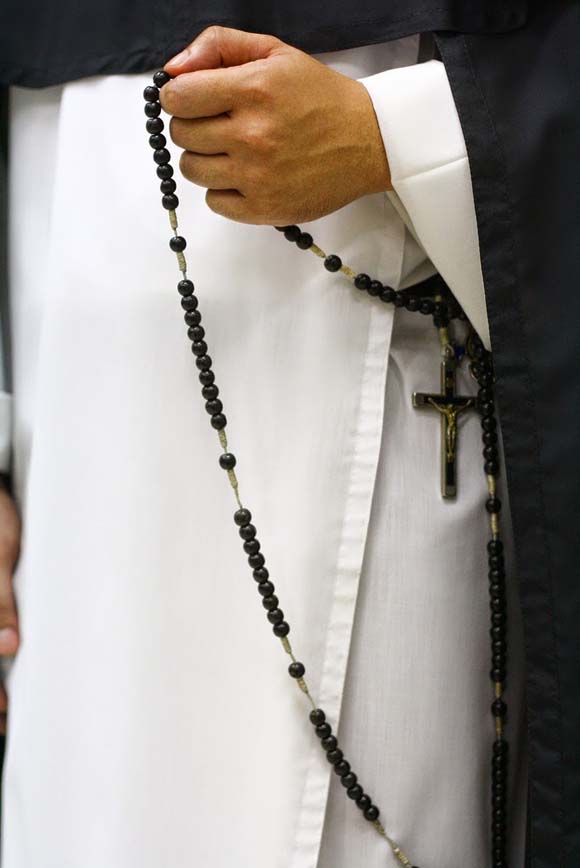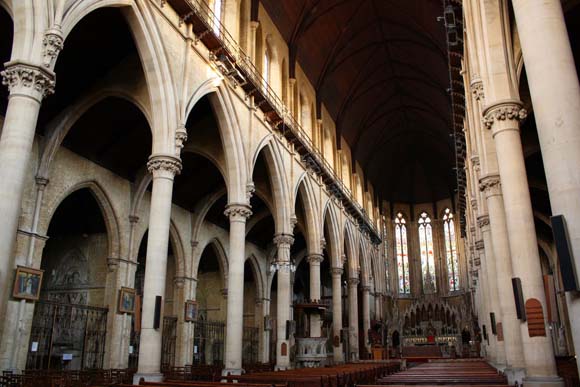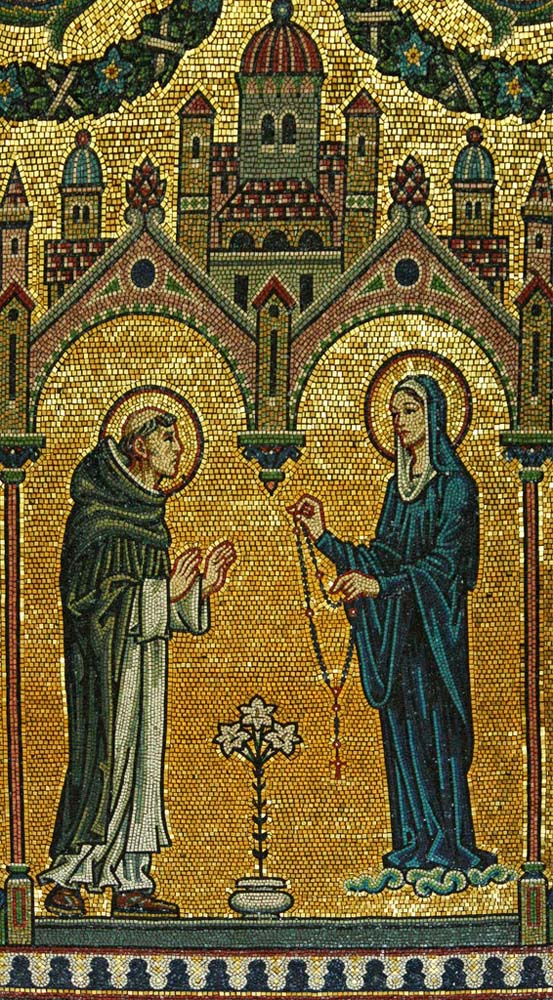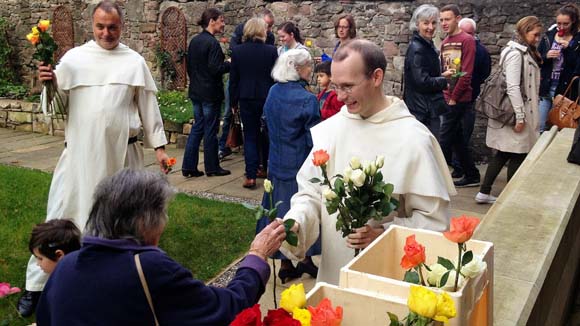
The Rosary: Introduction
6.45k
Do you ever struggle to find the right words to pray to God? We very often “do not know how to pray as we ought” (Rom 8:26) and then we need to turn to God and say, “Lord, teach us to pray” (Lk 11:1). In response, Jesus offers us his own words, the Lord’s Prayer, to address our Father in heaven with confidence. The Church, too, has given Christians many powerful prayers to give voice to our deepest longings, to praise and thank God, and to ask him to meet our daily needs. We can make these ‘formal’ prayers our own by using them frequently as we lift our hearts to God. Through the habit of prayer, we become caught up in the divine dialogue of love.
 |
| The Rosary is part of the Dominican habit |
The Rosary is like that: it is composed of formal prayers but in it we draw closer to Mary, the blessed Mother of God, and through her we are invited into the infinite love of Jesus. The ancient motto, Ad Jesum per Mariam – To Jesus through Mary – encapsulates this movement. We honour Mary and try to imitate her because she was the pre-eminent Christian disciple. Thus we hope to become more Christ-like.
 |
| Mary points us to Jesus |
So Godzdogz is embarking on a new series on the Rosary, in which we will explore all the ‘Mysteries of the Rosary’ – those events in the lives of Mary and Jesus which reveal God’s great plan of salvation for us. When we pray the Rosary, we use the words of the Our Father, the Hail Mary, and the Glory Be, but in our hearts we ponder a particular ‘mystery’, such as the birth of Jesus, his carrying of the Cross, or his Resurrection. All the mysteries are Christocentric, even where Mary seems to be the subject (such as her Coronation as Queen of Heaven), because Mary is always pointing us towards her Son. With Mary, we contemplate and adore Jesus.
 |
| Priory Church of Our Lady of the Rosary and St Dominic, Haverstock Hill, London, with 14 Rosary chapels (the last Glorious Mystery is depicted in the stained glass of the East window) |
The Rosary is a prayer for all seasons: the mysteries take us through the whole range of human experiences in the light of Christ, from joy to sorrow, death to risen life. Indeed, the Rosary is many things at once: it uses simple prayers but invites profound meditation; it involves mental words and tactile beads (in fact, ‘bead’ comes from bede, the old English word for ‘prayer’); it is very old yet always fresh; Biblical in both explicit and implicit ways; to be said alone or together in the family or religious community; a prayer for the church, the home, or the road.
 |
| Filipina nuns pray the Rosary during the EDSA demonstrations that peacefully toppled the Marcos dictatorship |
The Rosary is also a specially Dominican prayer. It is ‘our sacred heritage’ and ‘a characteristic mark of the Order’, and we wear the Rosary on our habit. The modern Rosary was shaped and popularised by Dominicans, such as Blessed Alain de la Roche, Jakob Sprenger and later Pope St Pius V, but earlier forms were important to St Dominic himself and the first brethren. Indeed, you can often see depictions of Our Lady granting the Rosary to St Dominic.
 |
| Our Lady giving the Rosary to St Dominic |
This series will feature a reflection on each of the 20 mysteries as well as an introduction to each set of mysteries: Joyful, Sorrowful, Glorious, and Luminous.
For some information about how to pray the Rosary, see https://www.ewtn.com/Devotionals/prayers/rosary/how_to.htm.
But note that the Dominican style is simpler in its core constituents. It begins:
O God, come to our aid.
O Lord, make haste to help us.
Glory be … Amen. Alleluia.
The first mystery is then announced (no Apostles’ Creed), followed by the Our Father, 10 Hail Mary‘s and the Glory Be. The pattern is repeated to complete the set of 5 mysteries. There is an option to say all 15 or 20 mysteries, but this is not necessary! Then the Rosary finishes with the Salve Regina (Hail, Holy Queen).
 |
| Traditionally, roses are distributed after Mass on 7 October, the feast of Our Lady of the Rosary |


